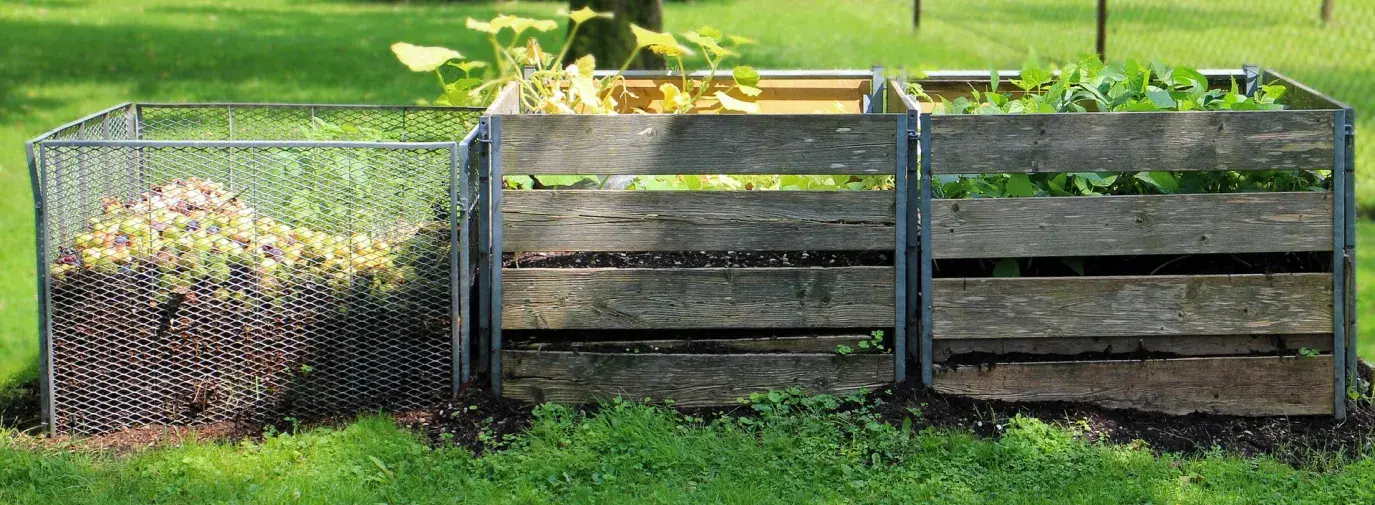
Perhaps one of the biggest reasons why many people don’t start composting is that they actually don’t know how to start. It’s hard to tell which of the many available compost bins is best for your household. Here’s a rundown on the different types, so you can begin composting today.
How to Compost
Composting means managing the decomposition of your household organic waste into a rich humus that is a great garden fertilizer. All composting methods share a few basic characteristics:
- Unless using a specialized bin, keep a roughly 50/50 mixture of “brown” and “green” organic waste in your compost to yield ideal results. “Green” waste is moist, organic waste like fruit and vegetable peels. “Brown” waste is dry, papery waste like grass clippings or twigs. See “What to Compost” below for more details.
- Ensure that your pile remains moist—about the consistency of a wrung-out sponge. Organic waste needs some water to decompose, which can generally come from adding more green waste.
- Don’t let the pile get too moist, because the aerobic bacteria that assist the composting process need air to survive. If your pile seems too wet, add more brown waste.
- Turn your compost to get air to the aerobic bacteria and speed up the process. Wear gloves and a dust mask to prevent exposure to allergens.
- Pay attention to your compost’s temperature. The decaying process actually generates heat, so your pile should feel warm. If it doesn’t, add more green waste. Decomposition occurs most efficiently when the temperature inside the pile is 104°F–131°F. You can use a compost thermometer to take your compost’s temperature.
- Keep a small container in your kitchen to easily collect green food scraps, so you don’t have to run outside to your larger bin every time you peel an orange or crack an egg. Storing it in the freezer will keep smells and flies at bay.
- The best time to start composting is in the spring or early summer. The process will be much slower in cold weather, though an insulated holding bin can keep things going somewhat. Jerose recommends the “lasagna method,” or alternating layers of green and brown waste, so the pile is ready to decompose as soon as the weather warms up. He recommends stockpiling summer yard waste, so you’ll always have some on hand.
- To keep pests away, use an enclosed bin with mesh underneath, if it doesn’t have a bottom; or bury kitchen scraps underneath at least eight inches of brown waste. And don’t compost meat or dairy products, which give off a strong odor as they decompose that attracts pests.
There are many different types of composters to choose from based on your lifestyle and household needs. Read our article, "Pick a Composter, Any Composter"
What to Compost
The following items are fair game for your compost bin:
- Unbleached coffee filters and paper
- Cardboard
- Yard waste: Grass clippings, twigs, leaves, wood chips.
- Fruit and vegetable scraps
- Eggshells (broken into small pieces)
- Coffee grounds and tea bags
Do not compost at home:
- Pet waste: Can contain bacteria that’s harmful to humans.
Carefully consider:
- Meat or dairy: Will smell and attract pests, unless you use a special method like the Green Cone.
- Weeds: Low-maintenance composting will not kill weed seeds, so if you spread your compost on your garden, you’ll also be planting weeds. A highly managed compost pile will kill some weeds, through the heat generated by the process. Your best bet is to put weeds out for yard waste collection, where they’ll likely end up in a municipal composter that will kill the seeds.







